Through Trondheim
This morning, I woke up in Midtsandtangen recreationnal area I set up my tent in yesterday. The sun barely went under the horizon: we are less than two weeks away from the soltice and Trondheim is only 350 kilometers away from the artic circle. As a consequence, at already 6 am the temperature in the tent was unbearable, and I had to open the nylon door despite the bugs popping in. There was no surprise that night: a regular camping night, with rudimentary washing and tooth brushing.
Once on the bike, the few kilometers between there and Trondheim actually took hours to overcome. What took so long? Was it the poor signage? The hilly relief? The aftermath of a too strong and too long effort while just out of the plane yesterday? Surely a mix of all of that. But what is sure is that I did not arrive to Trondheim before 13:00 although I was ready at 11:00. 2 hours for less than 20 kilometers…
First impression of Norway in Trøndelag
Trøndelag (the region of Trondheim) has its own charm. While I was (slowly) biking along the shore, I could admire the relief and the vegetation, with pines dominating the cliffs that fall directly into the water. It was a curious feeling: nothing new to me, but a paradoxical mix of many different known landscapes, that one might have thought to be mutually exclusive but forming here a coherent whole. I succeeded into idenfifying at least three of those landscapes.
First, the Riviera, where I used to go in summer as a child. Yes, Riviera, because of the pines everywhere – not the same species, I guess! – but also the rocks plunging into the sea, the hilly roads by the coast that goes from creek to creek, the beaches made of stones rather than sand.
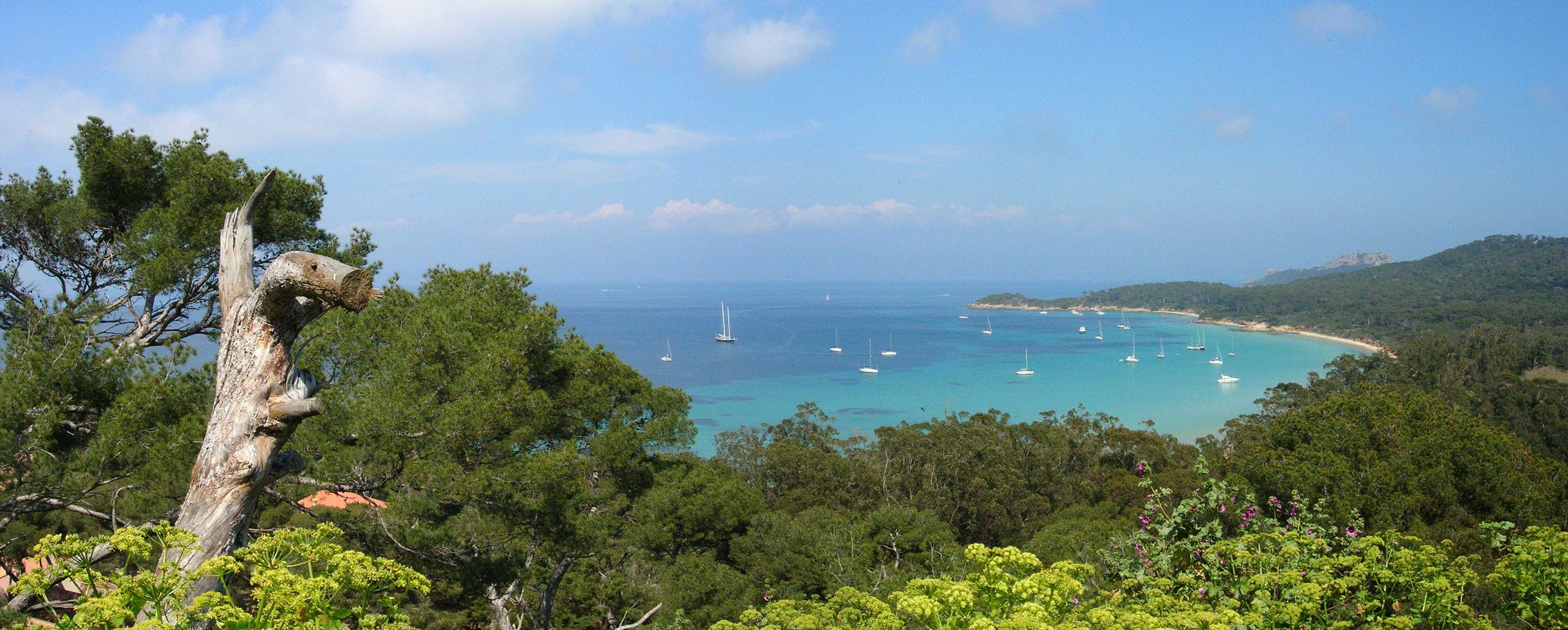
Vegetation on the island of Porquerolles (Riviera, France). If not the temparature, at least the pines, the relief and the creeks provoke a similar sensation in Trøndelag and on the Riviera.
The second landscape is of course Brittany (Bretagne in French) because – despite the pines and rocks that gave a vague impression of drought and reminded me of the South of France – a more attentive look would reveal a vegetation impossible without constant watering, mainly ferns. One could enumerate the characteristics of nothern Europe’s atlantic climate: the humidity, the rapidly changing weather, the gentle warmth that guarantee you mild temperatures even in winter and allow one to have some plants your close neighbors from the highlands could never imagine – palm trees in Vannes, kiwi trees in Trondheim. Nothing new here, the cool Atlantic ocean warms up the heart of many towns in the West, from Tromsø to Edhimburg, from Nantes to Dublin.
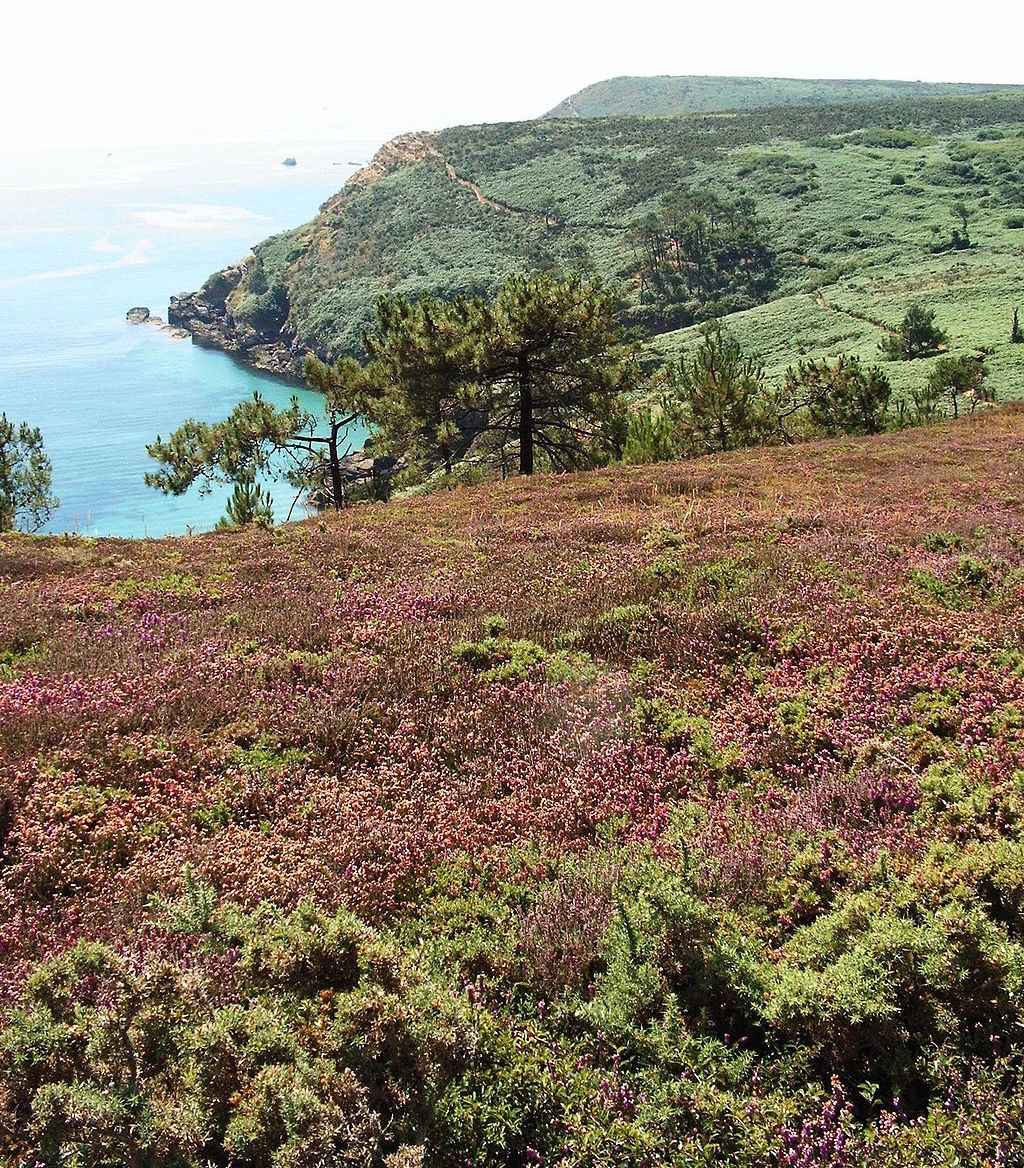
Cap de la chèvre (Brittany, France). It seems dry, but it is actually the wind, more than the drought, that prevent trees to grow. Musses and ferns would not survive in a dryer climate.
Last but not least, Switzerland. And again, yes!, Switzerland. Because of the steep slopes, the sheptel, the wooden houses, the valleys, and most importantly the snow that you feel everywhere even though it is summer: here a snow-scooter under a tarpaulin ; there a ski-jump platform ; everywhere steeep roofs.

Aafjord (Trøndelag, Norway). At first sight, it could seem that Léman lake has flooded the canton of Vaud. But no, we are in Norway.
The Phantom Itinerary
But all those thought are now hours old – a long time ago, on the exciting first day of my trip. Now, I stand in Trondheim, looking for a short while at the famous cathedral hosting the grave of Saint Olav, once king of Norway. I won’t talk about Trondheim – you will find an other post about the town – but I must explain that it is because Saint Olav attracted pilgrims in the Middle Ages, that Trondheim is the starting point of the EuroVelo route number 3, so-called “The Pilgrim’s Route” heading from one pilgrimage place to an even more famous pilgrimage destination: Santiago-de-Compostella.

The Nidaros cathedral (Trondheim, Norway). Nidaros (litt. “mouth of river Nid”) is one of the former names of Trondheim, the eldest being Kaupangen (litt. “trading place”). Why they changed it, I can’t say. Maybe did people just like it better that way?
Talking about route EuroVelo 3, where is it? I am now criss-crossing Trondheim in all directions but cannot find any trace of it. I did not expect to find any signs with the European flag with an inserted 3 – almost no route yet is signed with the official signs – but I should at least be able to find the marks of the Norwegian network, in which EuroVelo 3 is route number 7! But nor in the Tourism Office, nor in the bookshop can I find any bickle map… and the city is desperately empty of any long-distance signposts.
Fortunately, I have downwloaded OpenCycleMap app, a small map service relying on OpenCycleMap, itself relying on OpenStreetMap, where a kind user have uploaded the full track of route 7, as it has been once planned by the authorities. According to this very convenient tool, then, the route is supposed to start in front of Trondheim’s main railway station. But even once in the place, there is absolutely no sign of such a route.
What should I do? I tell you: I will follow the planned itinerary as if it was postsigned. And I will complain about the missing signposts and maps.
From Trondheim to May-Britt and Stig’s
First, I will get away from the city center. Instead of following the easier route in the valley, I will perform the biggest detour on Trondheim’s western hills that, for a mysterious reason – maybe the view – the planning team has elected best suited for the route. The climb on that hill will seem endless, and will actually last more than one hour. On the other hand, after the climb will come the glide, as endless as the first one, but unfortunately shorter to experience. The detour will be so large that I will even reach the ski-jumping platform of Granåsen.
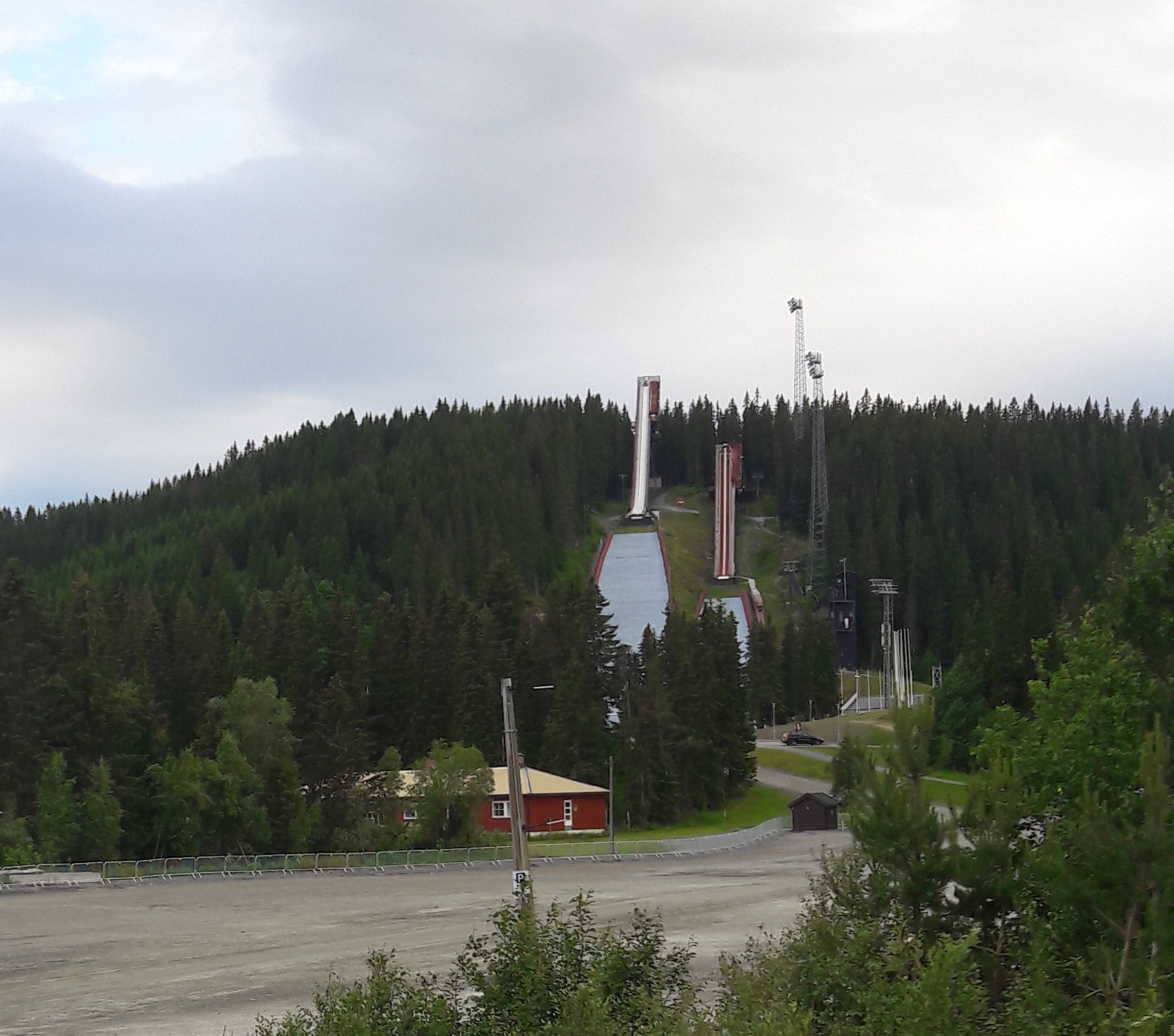
Granåsen ski-jumping platform (Trondheim, Norway). It always feel weird to see ski-jumping ramps standing in the middle of the forest in the middle of the summer. Even avec la meilleure volonté du monde, one hardly can imagine the same landscape under the snow.
As I am, standing before the cathedral, in Trondheim, few hours before my dinner, I do not suspect such a detour. And when May-Britt and Stig, who kindly offered to host me tonight, ask if I will be able to honour their dinner, I of course say “yes”. In a minute, I will even buy yogurt and cookies for dessert.
But when I will be biking, I will have to constantly delay my arrival, to reflect the unexpected length of the itinerary. At the end, I will pray them to start without me and, after a steep glide down the highway bridge and an unexpected cross-country ride down and up accross a torrent valley invisible on the map, I will eventually arrive at destination, early enough to catch up the delicious dinner.
A Norwegian Dinner
Dinner will be delicious I am sure, and the atmosphere triveligt. I will no doubt ask my hosts and their guests to keep speaking Norwegian, if they can bear me speaking Danish.
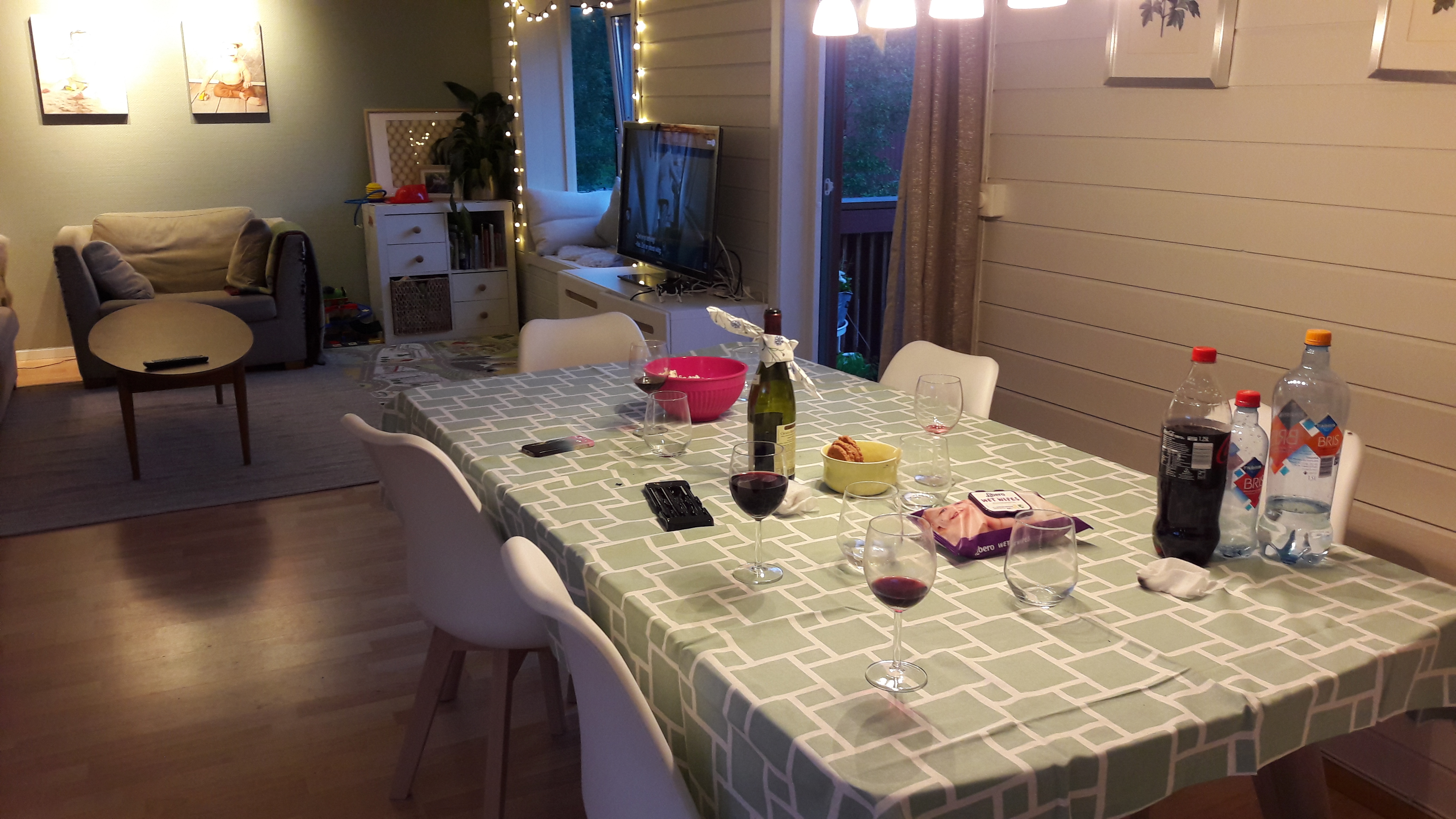
The table after dinner. In an instant, we will play a board game.
And when dinner will be finished, we will play a mix between Pictionnary and the bush telegraph: a game where you have to draw and guess. The first player is given a word, and has to draw it ; the person then passes the drawing to the next player, who has to guess what the orignal concept was and passes the world or phrase to the next player, who must draw. And then the next must guess, then draw, and so on, and so forth.
I will like the game, but be puzzled with the way to count the points: if the players before you do not correctly carry the original concept, you do not earn points even if your drawing is correctly identified by the next player ; on the contrary, if coincidentally the last player finds out the original meaning out of a wrong drawing, all the chain of players is rewarded. The game will probably make me think of cadavre exquis, and the French expression – translating directly to “exquisite corpse” – will surely make them laugh.
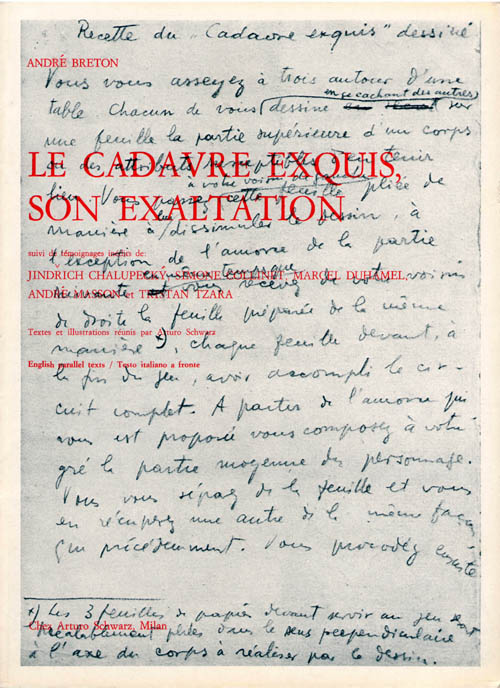
The Exquisite Corpse is a surrrealist game. It was allegedly invented by Marcel Duhamel, Jacques Prévert and Yves Tanguy. The principle is simple: each person writes a sentence in turn, without knowing what the former player has written – but the single last one or two words. The name of the game is supposed to originate from the first game round, which resulted in the sentence « Le cadavre – exquis – boira – le vin – nouveau. » (The exquisite corpse will drink the nouveau wine.)
When the guests, two women and one man, will leave – late but still sunny – we will seat conforably in the sofa with my host and discuss until we are so tired we cannot even speak. We will eventually stop speaking this mix of Norwegian and Danish we have carried on all night with the guests: even though it has positively contributed to preserving the friendliness of the dinner, it has also prevented us to have more advanced discussions.
We will discuss a long time with May-Britt and Stig, but what we exactly will say, I keep for tomorrow – not to mention that, as I leave Trondheim’s cathedral, I have no idea of what will happen yet.